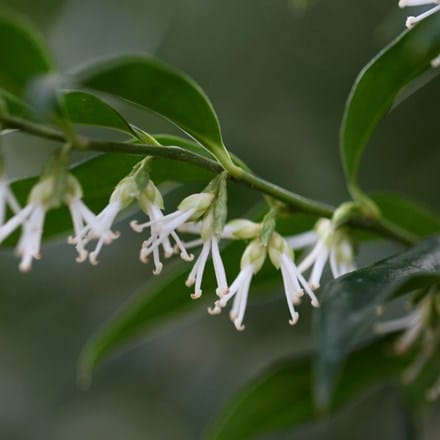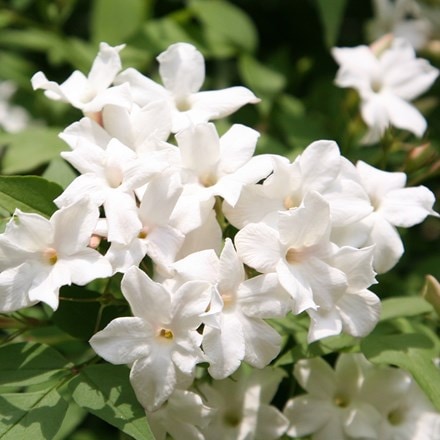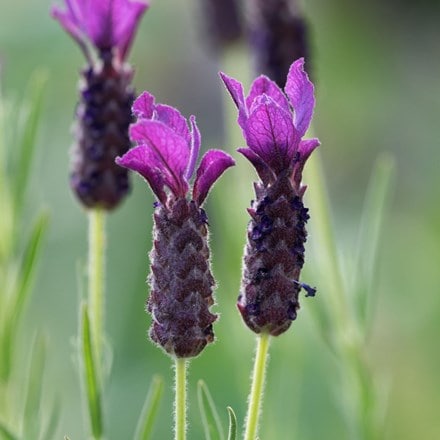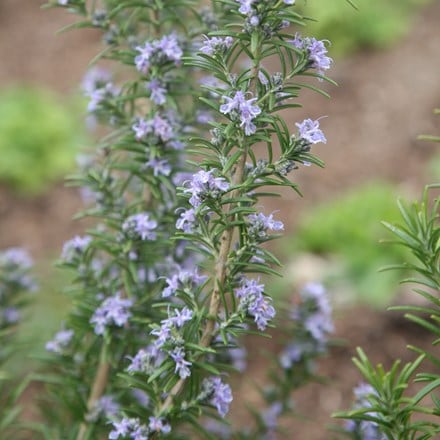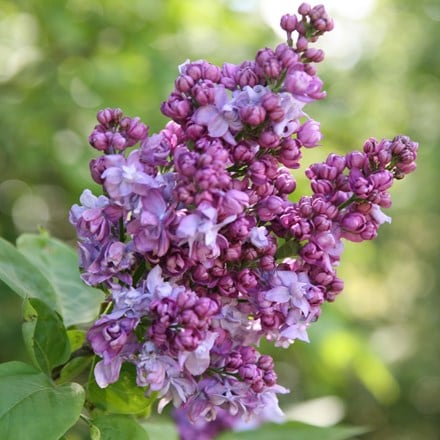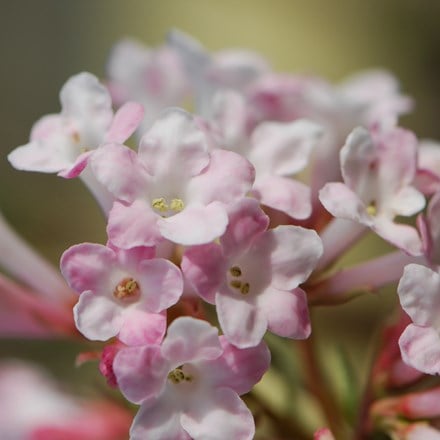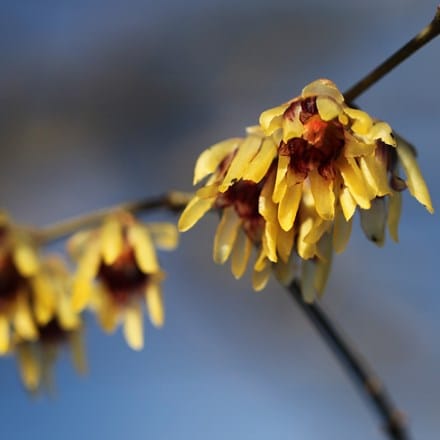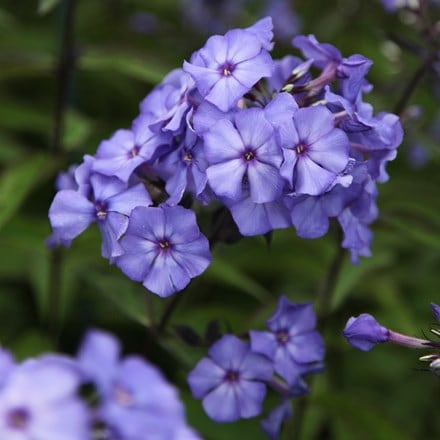Fragrance has the ability to bring a garden to life in a deeply personal way. Unseen, yet very much present, it creates a truly immersive feeling that can intensify your enjoyment as you go about your everyday gardening chores, relax outside with friends and family, or simply dash from door to door.
One of the best things about scented gardens is that they don't have to be grand or overly complicated. Not everyone has the luxury of a large outdoor space, but even in small spaces like balconies, terraces or windowboxes, it's still possible to create pockets of perfume to delight the senses.
If you'd like to find out which plants and flowers we'd recommend to fill your garden with fragrance, then here are our favourites.
1. Star jasmine (Trachelospermum jasminoides)
If you've a sheltered, sunny spot in the garden, this evergreen twining climber comes with a 5-star rating.
Wonderfully adaptable and easy to grow, it wends its way gracefully up fences, walls and pergolas with a little support, softening boundaries and creating perfumed canopies that cocoon you from the outside world. If left to its own devices it does get big, but it takes a trim in its stride, so it's equally good for creating ambrosial archways or obelisks where space is at a premium. Leave it unsupported, and it will trail, forming dense, groundcovering swathes that are perfect for scrambling down slopes or spilling over retaining walls.
The sweet scent of the pure-white flowers, which appear from mid- to late summer is rich and heady (particularly so on warmer evenings), and contains hints of jasmine, vanilla and almonds. Absolutely delicious!
2. English lavender (Lavandula angustifolia 'Hidcote')
A sensory powerhouse that perfectly combines scent, color, form and function, there's little wonder that this compact, evergreen shrub has earned a place in some of the very best gardens around the world.
All lavenders are fragrant, but 'Hidcote' is exceptional, and it's celebrated for its rich, sweetly herbaceous aroma that’s simultaneously invigorating and restorative. The flowers can be used to make scented oil or potpourri, while simply brushing against its silvery foliage will release a burst of aromatic oils into the air.
Try planting it near high traffic areas, ideally mixing it with other aromatic herbs, like thyme, sage and oregano, and use them to line pathways or border edges where you're more likely to skim past. Alternatively, create potted arrangements for the patio, tabletop and windowsill - and make sure to run your fingers through them as you pass.
3. Daphne (Daphne odora 'Aureomarginata')
A heartening sight on a dark, chilly day, daphne is one of those wonderful plants that somehow defies all reason, bursting into aromatic bloom in the very midst of winter. Plant this in a sheltered spot near an entrance or well-used pathway, and even on the most dismal day, it will help lift the spirits as you pass. Described as both sweet and spicy, with hints of jasmine, citrus and cloves, the scent of the pink-stained flowers lingers lusciously in the air - whether outside in the garden or inside in a vase.
For a sensational late winter and early spring display, team it with other scented, winter flowering plants like witch hazel (Hamamelis) or sweet box (Sarcococca), and scatter the ground beneath with a carpet of sweet violets (Viola odorata) and snowdrops (Galanthus spp.).
4. Scented geranium (Pelargonium 'Attar of Roses')
There's little wonder that 'Attar of Roses' has been in cultivation for centuries. Perhaps not as showy as some of its more contemporary cousins, this pelargonium is a terrific addition to any sensory garden, because the leaves' rose-like scent is activated by touch - encouraging interaction in a more personal, mindful way.
While the smell is immensely pleasing to us, their aromatic foliage will often repel insects, so if you'd like some respite from the mozzies and flies while eating or relaxing outdoors, then keep a few potfuls nearby. In borders, you can also use it as a natural form of pest control, placing it near more vulnerable plants to keep them happy and healthy - a real bonus in organic or kitchen gardens where pesticides are a no-no.
Originating from the Mediterranean, it can spend summers outside, but it needs to be frost-free in winter. A bright windowsill is ideal - well away from central-heating radiators, but within easy reach so you can give the leaves a gentle nuzzle as you pass.
5. Sweet pea (Lathyrus odoratus 'Matucana')
This treasured heirloom sweet pea (said to be one of the first to be cultivated in Europe) is outstanding. While relatively small in size, the flowers of 'Matucana' have an extravagantly powerful and evocative perfume that outshines all others - and their rich, somewhat velvety colouring of royal purple and plush claret is equally sublime.
One of the most robust and easy to grow sweet peas, it can be potted up or planted out into borders where their perfumed flowers can easily reach nose-level scrambling up obelisks, arches or well-established shrubs.
It's invaluable for making impromptu posies for friends and family, and when cut for the vase, it will fill a room with fragrance. Cut as many as you can, as it will stop the plant setting seed while encouraging it to produce even more bloom - a win-win for both the plant and the gardener.
Our 3 top tips for creating a fragrant garden
1. Position, position, position
Think about where you spend most of your time and focus your planting in these areas. Well trodden pathways, seating areas, entrances or even windowsills are prime real estate for fragrant plants. You may be surprised how much impact a jasmine (Jasminum officinale) or honeysuckle (Lonicera) can have when it's planted beside a door, or beneath an often-open window.
2. Make sure there's something for the vase
You may not always want to be out in the garden, but it's lovely to be able to bring something in, so try to make sure there's always a few flowers or stems that you can pick for the vase. Mock orange (Philadelphus), stocks (Matthiola), garden pinks (Dianthus), lilac (Syringa) and winter Sweet (Chimonanthus) are all worthy contenders, easily able to fill a room with their fragrance.
3. Think about the evenings
Many of us lead busy lives, and apart from the weekends, we may not get to spend too much time out in the garden when it's still light. If you fit into that category, why not create a tailormade collection that focuses on those plants that are at their most fragrant in the evenings. Honeysuckle (Lonicera), summer phlox (Phlox paniculata), regal lilies (Lilium regale), tobacco plant (Nicotiana sylvestris) and sweet rocket (Hesperis matronalis) will do the job nicely.











